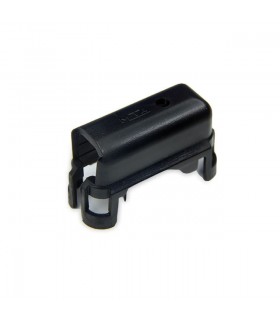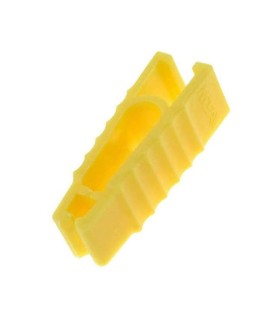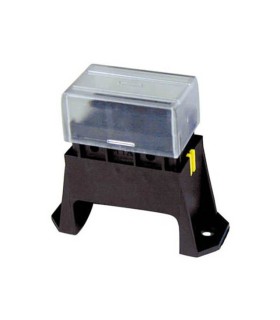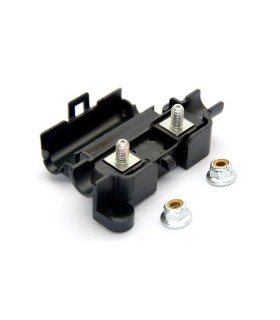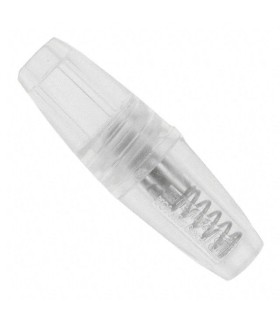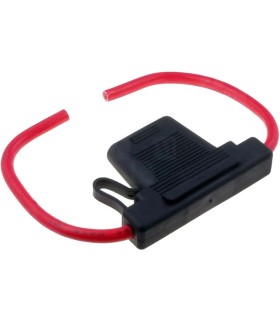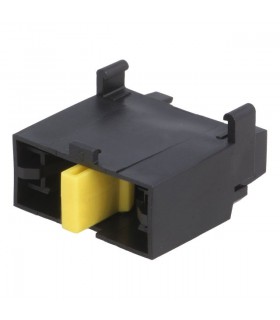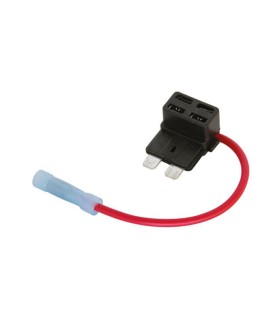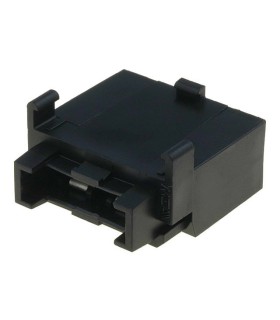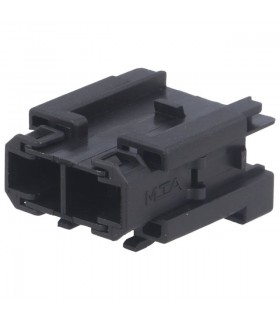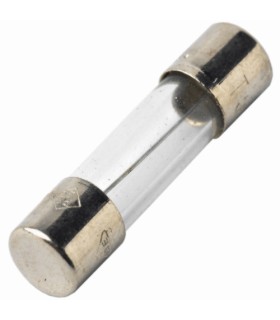Fuses and protections
Subcategories
Sale of Fuses and Fuseholders wholesale
Errebishop, a leading manufacturer and distributor of wiring components and electrical equipment is highly specialised in the sale of wholesale fuses and fuse holders.
Our sale of fuse holders and fuse wholesalers includes products of the highest quality manufactured according to all safety standards. We have been operating successfully in this sector for more than 20 years and, thanks to the production capacity of our 2 plants, we are able to meet all our customers' needs.
Our experience and qualified work have allowed us to be considered, at present, one of the most important reference points for the wholesale of fuses and protections, and for the production and distribution of everything concerning wiring and electrical material.
What are Fuses and Fuseholders?
Fuses and fuse holders are indispensable elements to guarantee the safety of an electrical appliance or a circuit supplied by current.
Fuses, in fact, are devices that protect in the event of overcurrent (i.e. current whose intensity significantly exceeds that provided by the mains or by an appliance, a condition that occurs, for example, during short circuits): in these cases, fuses interrupt the flow of current.
Fuses can be installed manually, in series, on the current lines to be protected, thanks to the use of fuse holders. Each fuse must be placed in its own fuse holder to ensure maximum safety.
What fuses look like:
- An insulating container, usually cylindrical in shape, made of glass, ceramic or porcelain.
- Two contacts for connection located at the ends of the insulating container
- An internal metal wire joining two contact terminals: the wire is calibrated so that it melts if the intensity of the current flowing through it exceeds the limit value. In fuses designed to withstand high currents, the insulating container is made of ceramic and the wire is immersed in sand: this quickly extinguishes any electric arc (i.e. a strong electrical discharge) that may form when the circuit is opened.
Fuses are not all the same, but vary according to the current intensity (measured in amperes) they will have to withstand.
It is therefore essential to check this value before making a purchase and, of course, to make sure that the product is of excellent workmanship and quality.
How Fuses and Fuse Holders Work
Knowing how fuses and fuse holders work is extremely simple:
the fuse is made from a conductive wire, placed inside a cartridge made of insulating material.
In order to function, the fuse must be connected in series to a circuit. This can be achieved by housing the fuse inside a fuse protection or fuse holder.
Only when the fuse is correctly connected to the circuit will the current from the circuit also circulate within the fuse. To be precise, the current will circulate inside the conductor wire.
The conducting wire is designed to withstand certain current intensities. When an overcurrent condition occurs, the wire overheats (due to the heat generated by the Joule effect) and melts.
The melting causes the circuit to open and the current flow to stop. In this way, the circuit is protected, short circuits are avoided and any equipment connected to it is safe.
When choosing fuses and protections, in order to purchase the right ones, in addition to considering the current intensity threshold (amperage), one must also evaluate the speed of intervention and the current breaking capacity.
In addition, the application of a fuse or the replacement of worn fuses are extremely delicate operations that must be carried out with great care, possibly disconnecting the electrical power supply to the system, and making sure that you are using safe and compliant products.
Areas of use of fuses and protections
As regards the areas of use of fuses and fuse protection, it must be said that years ago fuses were considered to be the main devices against short circuits (always alongside thermal circuit breakers).
Today, fuses and fuse protection have been replaced in many sectors by thermal-magnetic circuit breakers, which do not have to be replaced every time they intervene and which also provide thermal protection.
These elements, however, are still indispensable for the integrated protection of individual appliances or electronic devices for which a short circuit may be feared.
To date, the main areas of use for fuses and protectors are as follows:
- Domestic environment
It is possible, for the protection of an appliance or device, to manually apply a fuse within an electrical circuit. To do this, however, great care must be taken or an expert must be consulted. - Industrial environment
Here we find fuses designed to withstand large amounts of current, generally used in the electrical systems of forklift trucks, goods lifts, etc.. - Marine
These are fuses for high current intensities, generally used for battery protection. - AutomotiveThese are special fuses (automotive fuses) designed for automotive circuits.
Each area refers to specific fuses and fuse holders, so it is best to enquire before each purchase or seek help from an experienced dealer.
Fuse types and protections
The types of fuses and fuse holders are different and are divided according to their use and context, but above all according to their calibration and amperage.
The main types of fuses, with their associated protections, are:
- Miniature fuses
These are used for circuits with not too high current ratings (e.g. 2 amperes - 220 V) and consist of a glass or ceramic cylinder with the conductor wire inside. dvs. - Industrial fuses
These fuses are used in the industrial sector and also consist of a glass cylinder and a conductor wire, but can have a higher rating (e.g. 16A - 600V). - Automotive fuses
These are fuses used in transport vehicles, recognisable by their distinctive U shape with two blades at each end. They are used to protect the car's electrical circuits from short circuits and not to cause damage to other components. There are four standard types of fuse (mini low profile, mini standard, medium, maxi). - Self-restoring fuses
These are used when short circuits or overloads are frequent and normal: fuses of this type reset themselves and do not have to be replaced every time an overcurrent occurs. - Thermal fuses
They interrupt the circuit when the temperature of the fuse exceeds a certain temperature. Threshold values vary from model to model (typically 50 °C to 300 °C). - Slow-blow fuses
These fuses work differently: instead of a wire, they have a metal coil spring that is held under tension. If the current intensity is exceeded for a certain time, the temperature rises and the spring joint melts: as a result, the spring retracts and the circuit breaks.
These are the main types of fuse. In any case, whatever model you choose and whatever its intended use, you should ensure that it complies with all safety standards.






